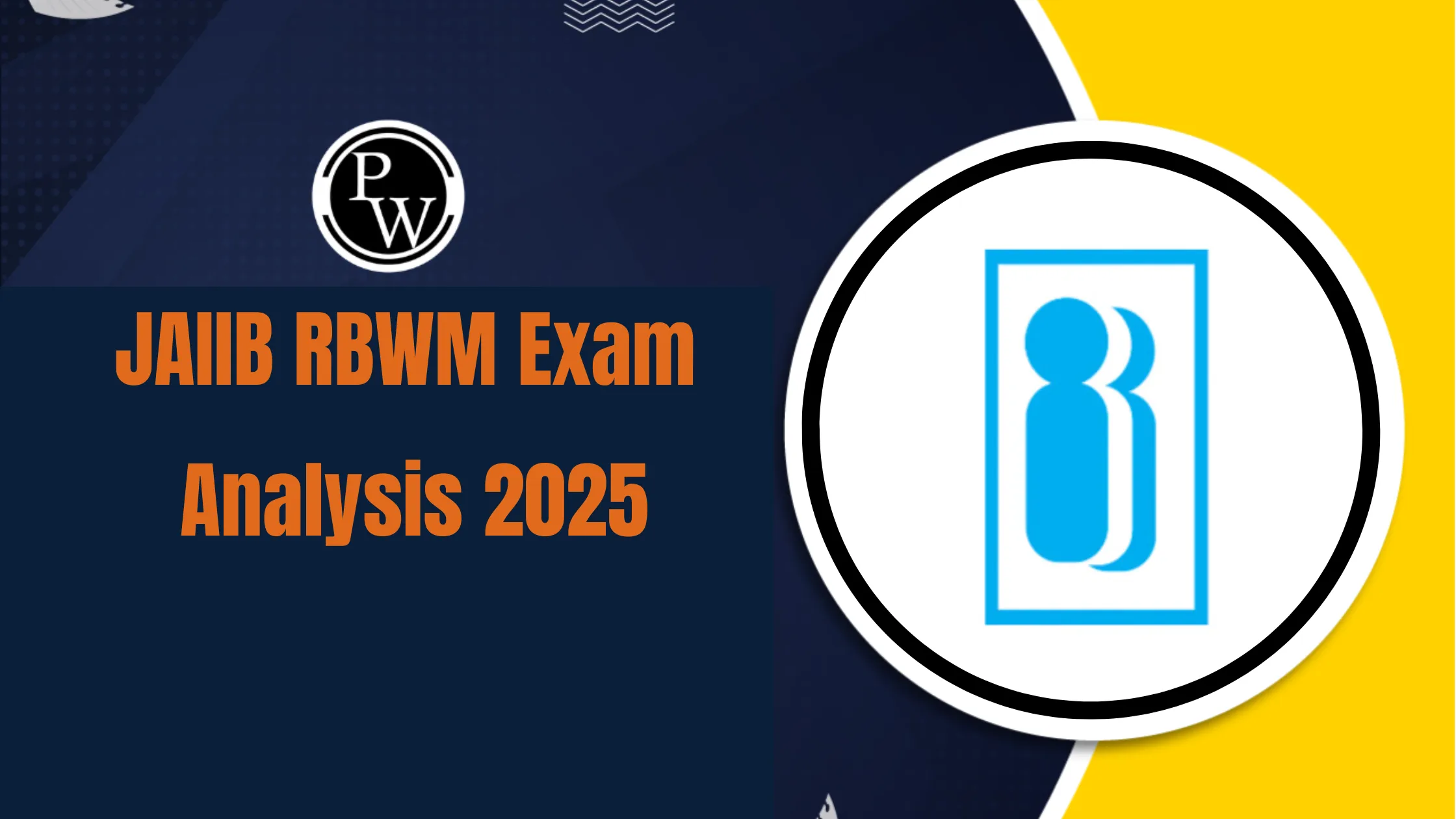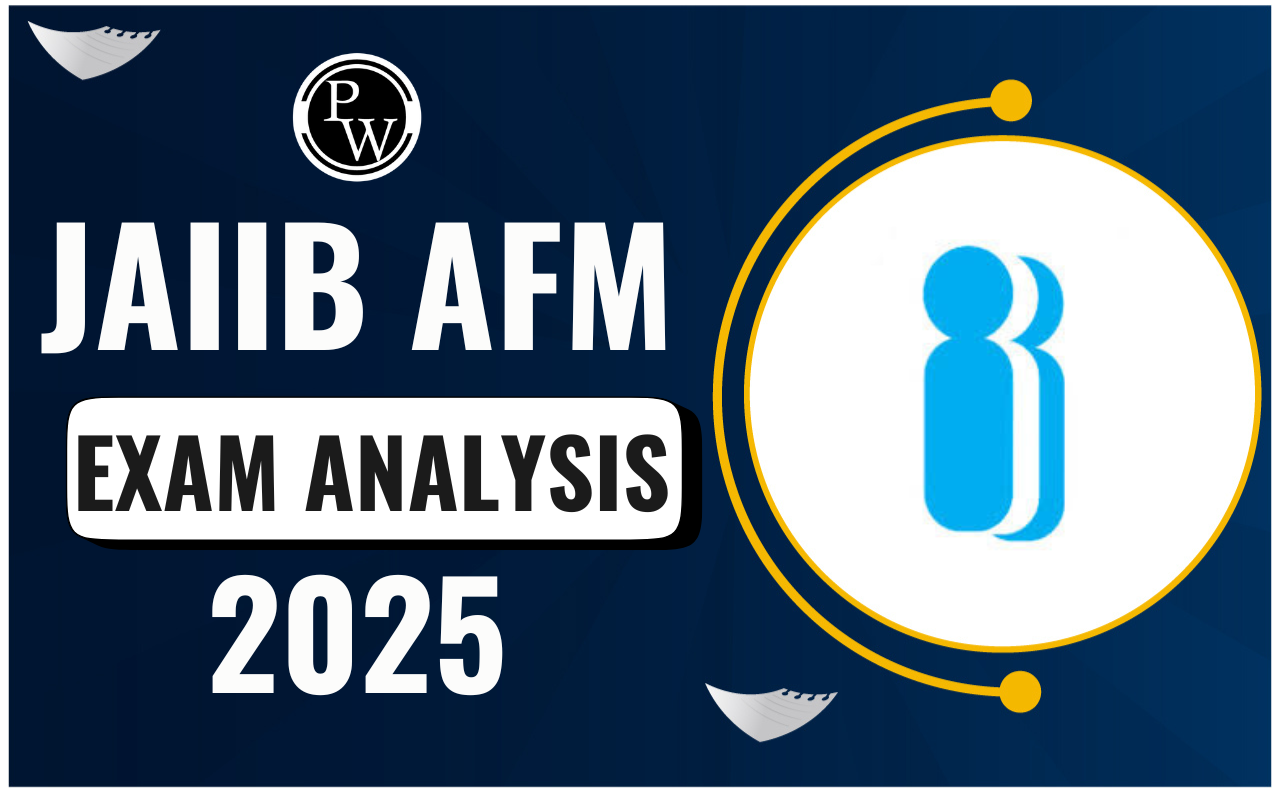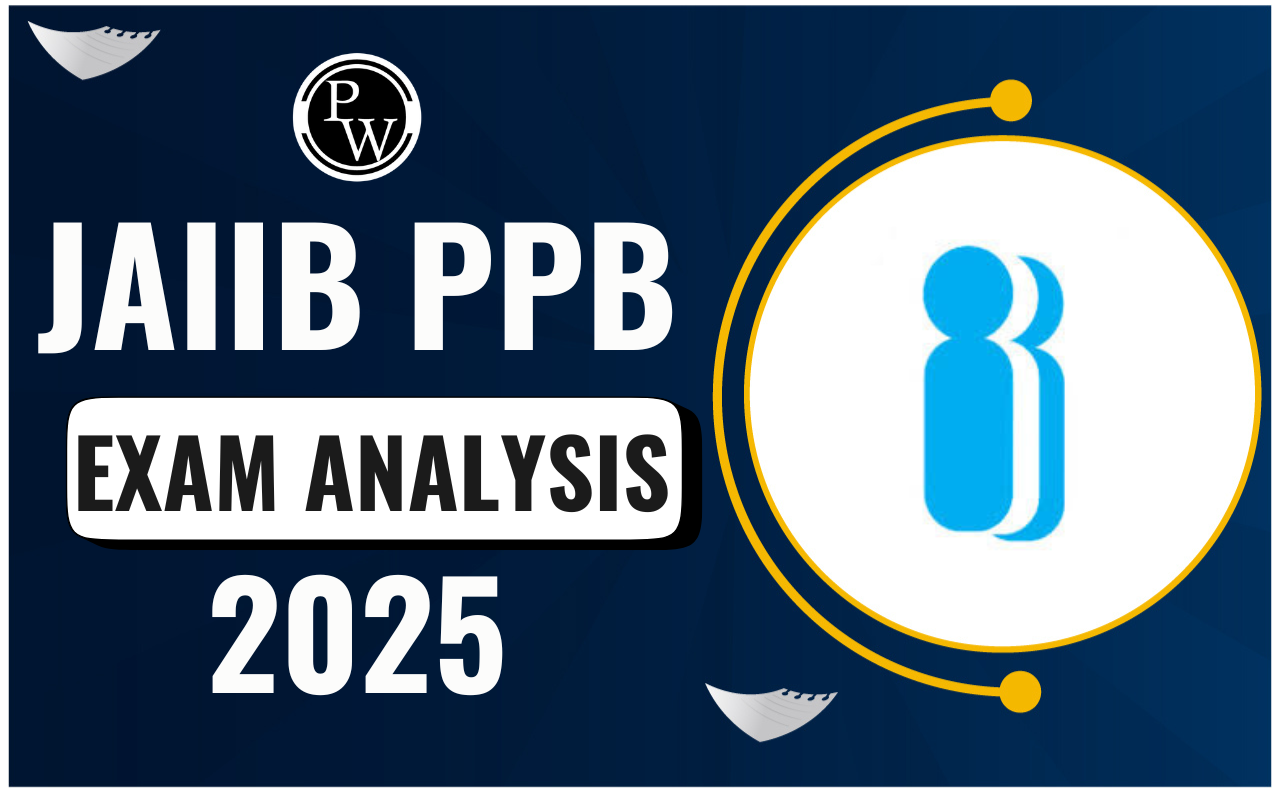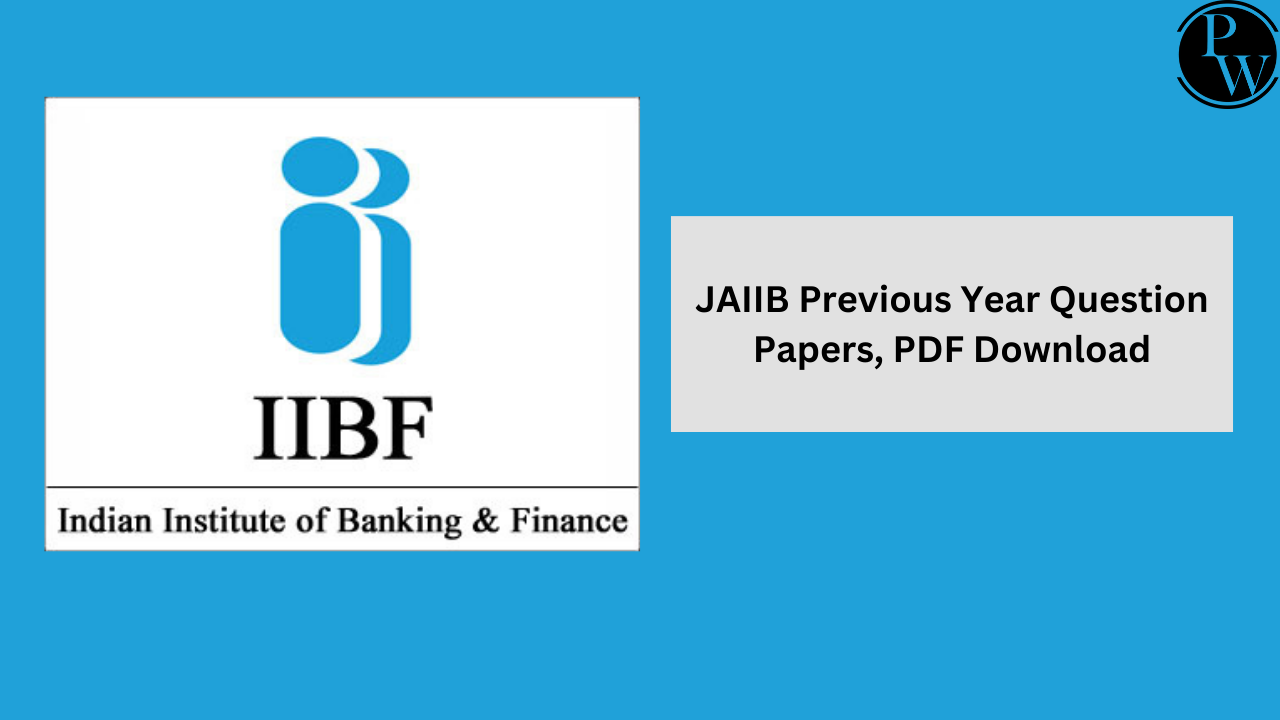
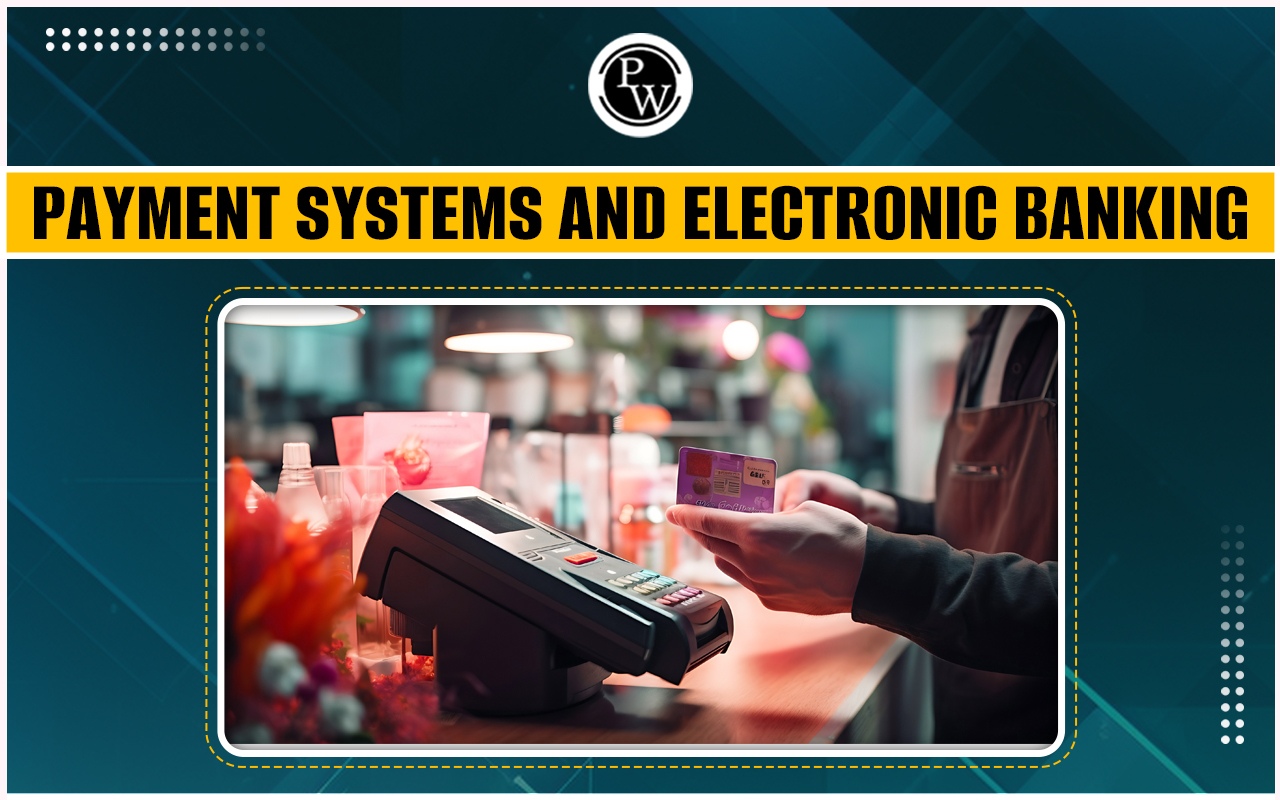
Payment Systems and Electronic Banking: Payment Systems and Electronic Banking revolutionize how financial transactions are conducted, replacing traditional cash and check methods with digital alternatives. Electronic banking, also known as e-banking or Internet banking, empowers customers to manage their accounts and conduct transactions conveniently through computers or mobile devices. This includes activities such as checking balances, transferring funds, and paying bills, offering unparalleled flexibility and accessibility.
Simultaneously, Electronic Payment Systems facilitate transactions over electronic networks like the Internet, eliminating the need for physical currency or paper checks. This shift towards digital payments has been accelerated by initiatives like demonetization, driving significant growth in India's electronic transaction landscape. It's crucial for banking students preparing for JAIIB Exam 2024 to grasp these concepts because it gives them the skills to understand the ever-changing landscape of electronic banking and payment systems effectively. Essentially, it equips them with the knowledge they need to confidently operate in the world of digital finance.What are Electronic Payment Systems and Electronic Banking?
An Electronic Payment System is a way for people to pay for things online without using cash or checks. Instead, it lets you make transactions electronically, no matter where you are or what time it is. This system involves different parts like the people sending and receiving money, banks, electronic devices like computers or phones, communication networks, payment gateways, and mobile apps. As the world moves towards more digital ways of doing things, electronic payment systems and electronic banking are becoming more popular because they're fast, convenient, and efficient. They cover a wide range of financial tasks, from buying stuff online to sending money to friends.Types of Payment Systems and Electronic Banking
In India, the evolution of Payment Systems and Electronic Banking has been remarkable, driven by the nation's rapid economic growth and the government's push for a cashless society. These systems redefine how transactions are conducted, offering convenience, speed, and security. Here, we've mentioned some of the top key electronic payment methods and banking services:- Unified Payments Interface (UPI): UPI has emerged as a game-changer, allowing seamless fund transfers by linking multiple bank accounts to a single mobile app. It facilitates swift transactions between individuals and merchants.
- Mobile Wallets: Services like Paytm, PhonePe, and Google Pay have gained immense popularity, enabling users to load money onto digital wallets for a variety of transactions, from bill payments to online shopping.
- Debit and Credit Cards: Debit and credit cards are ubiquitous in India, offering a convenient way to make purchases both online and offline, as well as withdraw cash from ATMs.
- Immediate Payment Service (IMPS): IMPS enables instant interbank transfers through mobile phones, internet banking, or ATMs, which is ideal for quick peer-to-peer payments.
- National Electronic Funds Transfer (NEFT): NEFT facilitates one-to-one fund transfers across the country, operating on a deferred settlement basis and serving individual and corporate needs.
- Real-Time Gross Settlement (RTGS): RTGS ensures real-time settlement of high-value transactions between banks, providing a reliable avenue for large-scale fund transfers.
- Prepaid Instruments: Prepaid cards and gift cards offer a hassle-free way to make electronic payments with pre-loaded amounts, enhancing convenience for users.
How Electronic Payment Systems Work?
Electronic payment systems are advanced platforms that help move money between different parties, often starting from one bank account and ending in another. Here is a step-by-step guide to how electronic payments usually work: Step 1) Entering Payment Information: When you buy something or send money, you type in your payment details. This could be your credit card numbers, bank account info, or login details for digital wallets. Step 2) Payment Gateway: Your payment info goes to a payment gateway, which acts as a link between you, the seller, and the bank. The gateway decides whether to approve or decline the payment. Step 3) Validation and Security: Before processing your payment, the system checks if your info is correct and safe. It uses strong security measures to protect your data while it's being sent, so electronic payments are very secure. Step 4) Transaction Processing: Once your payment is approved, the money moves from your account to the seller's or receiver's account. This happens pretty quickly, and the transaction is completed. Therefore, electronic payments can be divided into two main types: one-time payments, like buying something online, and recurring payments, like paying your monthly bills. Each type helps make transactions between customers and businesses or other people easier. Also Read: Is JAIIB Tough to Crack? Eligibility, Exam PatternPayment Systems and Electronic Banking Advantages
Payment Systems and Electronic Banking offer numerous benefits that streamline financial transactions and enhance security. Check the below important points for the Payment Systems and Electronic Banking Advantages:- Round-the-Clock Accessibility: Electronic Payments can be conducted at any time, providing users with 24/7 access to financial transactions.
- Global Reach: With electronic banking, users can make payments and transfer funds globally, without being hindered by geographical boundaries.
- Instant Transactions: Electronic payments are processed swiftly, enabling near-instantaneous transfer of funds between accounts.
- Speedy Settlement: Compared to traditional payment methods, electronic transactions often result in faster settlement times, ensuring quicker access to funds for both senders and recipients.
- Effortless Record-Keeping: Electronic Payment Systems facilitate seamless record-keeping for both businesses and individuals, simplifying the tracking of financial transactions.
- Enhanced Security Measures: Electronic Payment Systems employ robust encryption and authentication protocols, ensuring the security of transactions and safeguarding sensitive information from unauthorized access.
Payment Systems and Electronic Banking Disadvantages
While Payment Systems and Electronic Banking offer many benefits, they also come with some drawbacks. Get here details on the Payment Systems and Electronic Banking Disadvantages:- Security Concerns: Electronic Payment Systems can be vulnerable to security breaches like hacking, phishing, and identity theft.
- Technical Issues: These systems depend on technology, so technical problems or system failures can interrupt transactions and cause inconvenience.
- Fraud Risk: Even with strong security measures, electronic payment systems are not completely safe from fraud. Unauthorized transactions, stolen credentials, and other fraudulent activities can still occur, resulting in financial losses.
- Privacy Concerns: Users might worry about how their personal information is collected, stored, and used by electronic payment providers.
- Transaction Fees: Some electronic payment systems charge transaction fees, which can add up over time and increase the overall cost of using these services.
- Dependence on Internet Access: Reliable Internet access is necessary for most electronic payment systems. Poor connectivity can hinder the ability to complete transactions, especially in remote or underserved areas.
Regulatory Bodies for Payment Systems and Electronic Banking in India
The regulation of Payment Systems and Electronic Banking in India is primarily handled by the Reserve Bank of India (RBI) and other relevant authorities. These bodies ensure the security, efficiency, and stability of electronic payment systems. Here, candidates can find detailed information on Regulatory Bodies for Payment Systems and Electronic Banking in India:1. Reserve Bank of India (RBI):
The RBI is the central authority overseeing electronic payment systems in India. It implements various guidelines and frameworks to regulate these systems:- Payment and Settlement Systems Act, 2007: This act provides the legal foundation for regulating payment systems in India, empowering the RBI to supervise and ensure financial stability and consumer protection.
- Guidelines on Prepaid Payment Instruments (PPIs): The RBI issues guidelines for digital wallets and prepaid cards, including limits on issuance, reloading, and Know Your Customer (KYC) requirements.
- Unified Payments Interface (UPI): The RBI regulates UPI with guidelines on transaction limits, security protocols, and dispute resolution, making it a popular choice for both peer-to-peer and merchant transactions.
2. National Payments Corporation of India (NPCI):
NPCI plays a crucial role in managing and regulating various payment systems. Get here more information on the National Payments Corporation of India (NPCI):- Operational Guidelines: NPCI sets operational standards for systems like UPI, Immediate Payment Service (IMPS), and Bharat Bill Payment System (BBPS), ensuring secure and standardized operations.
- Security and Risk Mitigation: NPCI enforces security measures such as encryption standards, two-factor authentication, and continuous monitoring to protect against fraud and ensure safe transactions.
3. Other Regulatory Bodies:
Several other authorities also contribute to the regulation of electronic payment systems. Check here for more details on the Other Regulatory Bodies for Payment Systems and Electronic Banking in India:- Securities and Exchange Board of India (SEBI): Although SEBI primarily regulates the securities market, it also impacts electronic payment systems, especially concerning digital wallets and financial instruments.
- Insurance Regulatory and Development Authority of India (IRDAI): IRDAI oversees the insurance sector, including regulations related to electronic payments in insurance transactions.
- Consumer Protection Regulations: These regulations ensure transparency, disclosure, and effective dispute resolution to protect users of electronic payment systems.
- Data Protection and Privacy Laws: Laws like the Personal Data Protection Bill address issues related to the handling and protection of user data within electronic payment systems, contributing to a robust regulatory framework.
Payment Systems and Electronic Banking FAQs
Q1. What is electronic banking payment?
Ans. Electronic banking payment refers to the transfer of money electronically from one bank account to another without the need to handle physical cash. This method offers a quick and secure way to pay bills or receive deposits.
Q2. What are examples of electronic payments?
Ans. Common examples of electronic payments include credit and debit cards, mobile payment apps like Apple Pay and Google Pay, online banking transfers, cryptocurrencies such as Bitcoin and Litecoin, digital wallets like PayPal, direct debits, and gift cards.
Q3. What are the basic characteristics of a Payment Systems and Electronic Banking?
Ans. Payment systems and electronic banking are characterized by their ability to facilitate cashless transactions, reliance on digital technology, 24/7 accessibility, and the provision of digital transaction records for easy financial tracking.
Q4. What is the difference between traditional payment systems and electronic payment systems?
Ans. Traditional payment methods involve using physical cash or checks, whereas electronic payment systems use digital platforms to transfer funds. The rise in online shopping has shifted the preference towards digital payment methods, which offer greater convenience and efficiency.
Q5. What is UPI, and how does it work in the context of Electronic Payments in India?
Ans. UPI, or Unified Payments Interface, is a real-time payment system in India. It links multiple bank accounts to one mobile app for easy, instant fund transfers and payments, making it popular for both peer-to-peer and merchant transactions.
Talk to a counsellorHave doubts? Our support team will be happy to assist you!

Check out these Related Articles
Free Learning Resources
PW Books
Notes (Class 10-12)
PW Study Materials
Notes (Class 6-9)
Ncert Solutions
Govt Exams
Class 6th to 12th Online Courses
Govt Job Exams Courses
UPSC Coaching
Defence Exam Coaching
Gate Exam Coaching
Other Exams
Know about Physics Wallah
Physics Wallah is an Indian edtech platform that provides accessible & comprehensive learning experiences to students from Class 6th to postgraduate level. We also provide extensive NCERT solutions, sample paper, NEET, JEE Mains, BITSAT previous year papers & more such resources to students. Physics Wallah also caters to over 3.5 million registered students and over 78 lakh+ Youtube subscribers with 4.8 rating on its app.
We Stand Out because
We provide students with intensive courses with India’s qualified & experienced faculties & mentors. PW strives to make the learning experience comprehensive and accessible for students of all sections of society. We believe in empowering every single student who couldn't dream of a good career in engineering and medical field earlier.
Our Key Focus Areas
Physics Wallah's main focus is to make the learning experience as economical as possible for all students. With our affordable courses like Lakshya, Udaan and Arjuna and many others, we have been able to provide a platform for lakhs of aspirants. From providing Chemistry, Maths, Physics formula to giving e-books of eminent authors like RD Sharma, RS Aggarwal and Lakhmir Singh, PW focuses on every single student's need for preparation.
What Makes Us Different
Physics Wallah strives to develop a comprehensive pedagogical structure for students, where they get a state-of-the-art learning experience with study material and resources. Apart from catering students preparing for JEE Mains and NEET, PW also provides study material for each state board like Uttar Pradesh, Bihar, and others
Copyright © 2025 Physicswallah Limited All rights reserved.
Get App


